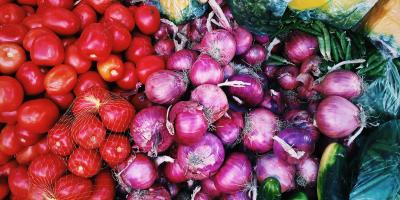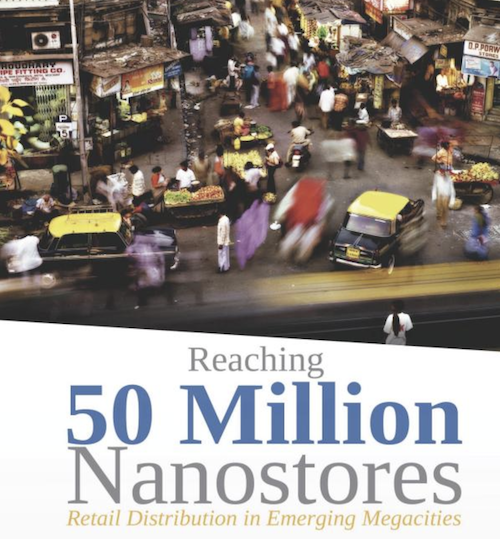Typical supply chain network-design models focus on minimizing costs without considering the cost and implications of changes in consumer behavior. Small retailers account for 50% of the world market share and are the main source of consumer-packaged-goods in urban areas around the world. Our work aims to understand and design optimal supply chains in this complex market to create high-performance operations based on consumer choice.

RETAIL OPERATIONS
Customer-centric supply chains
Consumers choose retailers based on socioeconomic variables and the availability of retailers in their geographic areas. Typical supply chain models focus on cost minimization without considering the implications of changes and variability in consumer behavior. Given increasing urbanization and the rising number of retailers, selecting one retailing source for regular purchases is becoming more complex. Thus, understanding the significant factors of consumer choice and analyzing their evolution over time becomes critical to designing forward-looking retail operations with data-driven, customer-centric supply chains, inventory management, and distribution systems.
Supply chains for mom-and-pop stores or nanostores
A mom-and-pop store, or "nanostore" (Fransoo, Blanco, and Mejia Argueta, 2017), is a small, family-owned retail outlet. We estimate there are 50 million nanostores around the world. While there are more nanostores in emerging markets, in developed markets they are primarily present in under-resourced communities and located in "food deserts". The high fragmentation of nanostores causes substantial distribution inefficiencies, especially in congested megacities. We study how nanostores may be more efficient and effective considering commercial and logistics strategies as well as technical challenges. We are developing projects throughout Latin America with CPG manufacturers, retailer associations, and other organizations. The goal is to develop models that would increase nanostore survival rates and develop new business approaches for owners to continue serving their main patrons, people who live in food deserts, or who live on less than US$8 per day. The models we're developing consider scarce storage capability, limited budget, shopkeeper's mindset, and owner preparation among other features that can shape the future of these widely-used supply chains.
mom-and-pop store, or "nanostore" (Fransoo, Blanco, and Mejia Argueta, 2017), is a small, family-owned retail outlet. We estimate there are 50 million nanostores around the world. While there are more nanostores in emerging markets, in developed markets they are primarily present in under-resourced communities and located in "food deserts". The high fragmentation of nanostores causes substantial distribution inefficiencies, especially in congested megacities. We study how nanostores may be more efficient and effective considering commercial and logistics strategies as well as technical challenges. We are developing projects throughout Latin America with CPG manufacturers, retailer associations, and other organizations. The goal is to develop models that would increase nanostore survival rates and develop new business approaches for owners to continue serving their main patrons, people who live in food deserts, or who live on less than US$8 per day. The models we're developing consider scarce storage capability, limited budget, shopkeeper's mindset, and owner preparation among other features that can shape the future of these widely-used supply chains.
FOOD SUPPLY CHAINS
Supply chains for agri-business
Farmers play a primary role in food supply chains. Often they are small businesses, fragmented, and exhibit business operations challenges. Their supply chains underperform compared to larger producers. We believe access to market, price, dependence on big intermediaries, lack of credit access, along with poor agricultural practices are causes of this gap in performance. In several projects, we understand how alternative distribution channels, the creation of food hubs, and the implementation of data-driven, go-to-market logistics strategies might help farmers to be more competitive and grow their businesses. Projects are underway with collaborators from UTEC and Universidad del Pacifico (Peru), INSPER and UFRGS (Brazil), Wageningen University (the Netherlands), the startups Sumá and Frexco (Brazil), the company Claro Energy (India), among others.
Food access models
Somerville, USA
Lack of nutrition is not simply caused by a lack of food but may also be caused by an overabundance of unhealthy foods in a given market. The latter instance of malnutrition is particularly troublesome for U.S. cities where many people do not have access to healthy food options. Many of these individuals live in “food deserts”, places where no grocery store that sells fresh produce exists within a one-mile radius. We believe that one way to combat the problem of food-deserts is to supply these areas with healthy food options. We focused on answering two research questions:
- What food supply chain model would residents of low-income areas prefer?
- What is the feasibility of implementing this food supply chain model to increase healthy food access in low-income areas?
This research was conducted by surveying residents of Somerville, MA, and interviewing stakeholders within the potential fresh produce sourcing supply chain for food desert neighborhoods. We developed this research in collaboration with Shape Up Somerville, the City of Somerville, and Tufts University.
Recent work on the Somerville project.
Latin America
- We are exploring a novel subscription-based supply chain model via an exploratory study based on surveys and interviews and a real-life pilot in the state of Rio Grande do Sul in Brazil in collaboration with INSPER and UFRGS (Brazil).
- We are exploring the role of open, mobile markets to increase accessibility to nutritious food in Valparaiso, Chile together with PUCV (Chile) and Universidad de La Sabana (Colombia)
- We are studying the consumption patterns and the role of neighborhood markets to combat obesity in a holistic way in the Mexico City metropolitan area in Mexico together with Monterrey Tech.
Supply chain strategies to address food waste challenges
One in three fresh produce items is lost or wasted annually. This equates to roughly 1.3 billion tons of food waste globally each year. Along with nanostore optimization, our work aims to address the significant gap in the study of food supply chains related to loss and waste. We aim to design novel strategies that,
- reduce the number of intermediaries and inventory levels, and
- improve logistics operations of food across the supply chain.
Understanding interactions between key food supply chain stakeholders in diverse regions will foster support for improving food supply chain efficiency, reducing malnutrition, and balancing the accessibility, availability of food for all population segments.
For more information
Dr. Chris Mejia Argueta at cmejia@mit.edu